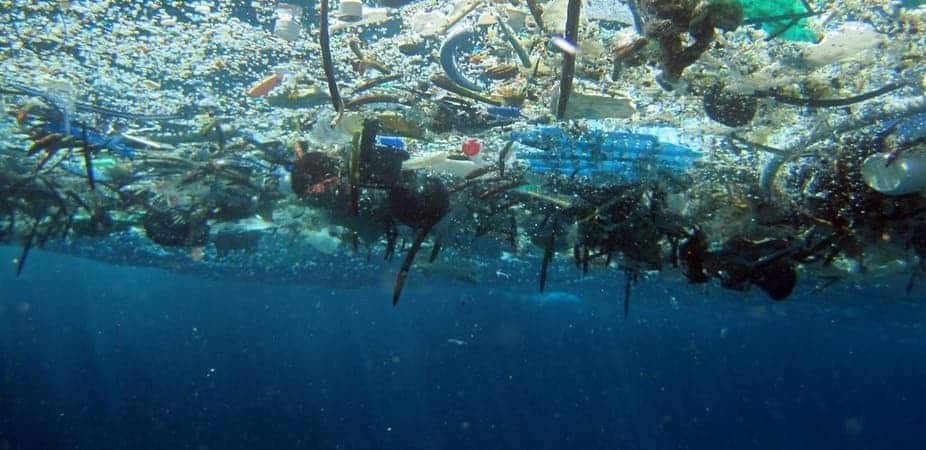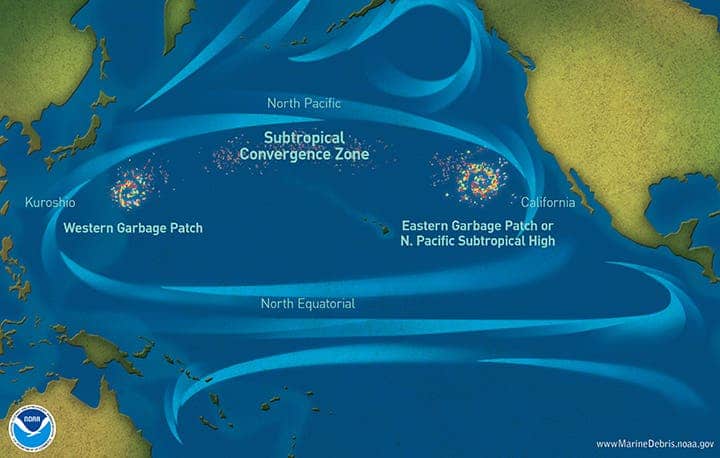Plastic bags, bottle caps and plastic fibres are among the myriad of micro plastic debris that wash out into the Pacific Ocean. These get ingested by the marine life like fish, mammals and birds which are dying from choking, intestinal blockage and starvation. Moreover, some are toxic pollutants that are absorbed, transported, and consumed in the food chain eventually reaching humans. Containing and eventually pulling out this plastic debris has proven to be a challenge. One proposed solution is to put a network of floating barriers around the ‘Great Pacific Garbage patch’ — an area where currents concentrated a huge mass of microplastics.

An analysis made by Dr Erik van Sebille and undergraduate physics student Peter Sherman from Imperial College London found that containing the garbage patch is not the most effective solution. The team modeled the movements of the plastics to trace their source. They found a large portion comes from the Asian coasts, particularly China and Indonesia. By placing plastic collectors like those proposed by the The Ocean Cleanup Project around these coasts way more micro debris would be collected. Namely, 31 per cent of microplastic would be removed compared to only 17 percent in the case of placing all collectors inside the patch, the authors report in Environmental Research Letters.
“The Great Pacific garbage patch has a huge mass of microplastics, but the largest flow of plastics is actually off the coasts, where it enters the oceans,” said Sherman.
“It makes sense to remove plastics where they first enter the ocean around dense coastal economic and population centres,” added Dr van Sebille. “It also means you can remove the plastics before they have had a chance to do any harm. Plastics in the patch have travelled a long way and potentially already done a lot of harm.”
The size and mass of the Great Pacific Garbage patch is disputed. As of now, there is no sound estimate — it’s darn big and dangerous that’s for sure.

For one, you shouldn’t conjure up an image of floating plastic bottles and yogurt cups miles long. These popup for sure, but most of this garbage is actually small bits of plastic (microplastics) that are suspended throughout the water column, like “flecks of pepper floating throughout a bowl of soup,” says NOAA Marine Debris Program’s Carey Morishige.
To gauge efficiency of containment, the researchers also looked for the areas where the microplastics overlapped with phytoplankton rich waters. Phytoplankton are microorganisms that form the base of the marine food pyramid. By placing the collectors at the coasts, the overlap was reduced by 46 per cent versus 14 percent. Previously, Dr van Sebille showed that 90% of seabirds swallow plastics. This makes sense in light of these most recent findings since seabirds linger around coasts where food is plentiful.
“There is a lot of plastic in the patch, but it’s a relative dead zone for life compared with the richness around the coasts,” said Sherman.
“We need to clean up ocean plastics, and ultimately this should be achieved by stopping the source of pollution,” said Sherman. “However, this will not happen overnight, so a temporary solution is needed, and clean-up projects could be it, if they are done well.”






